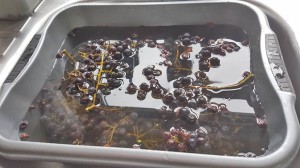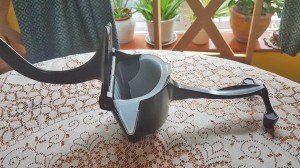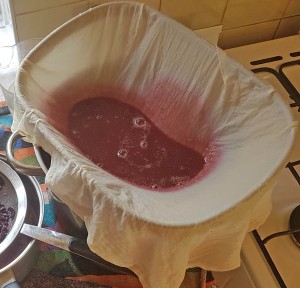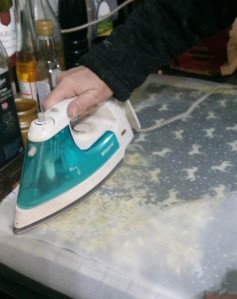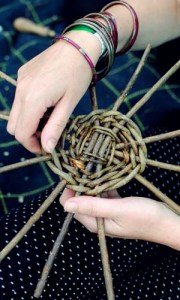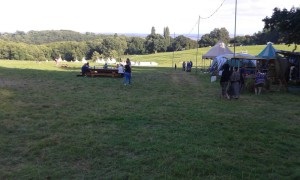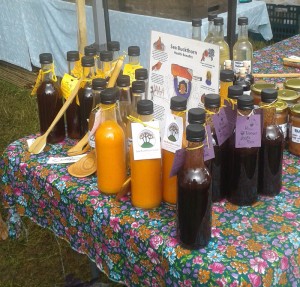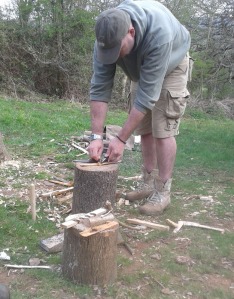In a climate where cold and rain are frequent features, your house is a critical resource. Unless you can afford to build your own, you will have to make do with a standard model, not designed with resilience in mind. Very few houses in Britain can function independently of mains services (‘off-grid’).
There’s still a lot you can do. Living off-grid is a major lifestyle change, and you can cultivate the correct attitude from any starting position. Then you’ll know what opportunities to look out for and be ready to seize them, as well as being better prepared for domestic emergencies.
Heating is important. You can always keep warm by wearing extra clothes, but a cold house soon become damp. This is a health hazard. Cut the high cost of heating energy with good insulation. There are many low-cost options, such as using double curtains and draught excluders in winter.
Use any outside space you have. You can grow herbs in pots and put up a washing line in the smallest of gardens. With a larger space, cultivate vegetables or hold community gatherings.
The structure of your house may be resistant to resilient improvements, but it’s filled with furniture, which is under more control. Consider quality and ease of cleaning in purchases. Learn how to care for furniture and you can afford to spend the extra on better made, or even locally crafted, items. Buy second-hand to save energy costs and help reduce the waste stream.
Taking this further, you could learn to repair or build your own furniture. For example, your landlord might not allow you to put up shelves. Find an old wardrobe and convert it to a bookshelf. If woodwork is too daunting, try making a rug or learning to upholster a simple stool. It’s important that you learn how much effort and skill is required, so that you know the true value of hand-made goods. Always try and source materials to benefit your local economy for your DIY projects.

These are all easy tasks, which you can carry out at any time. Suppose things go wrong in the outside world, upon which you depend? Do you know how to turn your mains services on and off? Where’s your water shut-off tap? You’ll need to know this if your system springs a leak! How would you make your house safe and secure if you have to leave it? Remember the two basic emergency situations are evacuation and isolation.
Let’s assume the latter case. You’re safe at home, but isolated from mains services and new supplies. Is your emergency food store independent of mains power? Many people rely on freezers to see them through. These are valuable in most circumstances. However, after a couple of days without mains electricity, all you have is a waste disposal problem. It’s very difficult to keep a freezer going on the sort of off-grid power you can easily access, but you’d learn a lot by setting this up.
How else could you provide essential services in your house in an emergency? What would you actually do if the water, gas or electricity went off? Make a plan. Would it see you through overnight? Could you last a few weeks? Understand what you might need and source the necessary equipment. A loft or shed are important as storage spaces for this.
For example, a well-insulated house can be kept from freezing or damp with the smallest of heaters. As long as you don’t keep leaving doors open, even a 500 watt oil-filled radiator can keep a room warm.
Never use a barbecue or other charcoal-burning device to heat a room or to cook indoors. They give off dangerous amounts of carbon monoxide, and could quickly kill you.
The truly resilient can make their own candle-powered flowerpot stove, using the proper instructions. The excitable inventor gives you full details to make your own if you scroll down, as shipping costs to the UK from the USA are quite high. Use this design and no other! All I’d add would be to use stainless steel for the inner metal workings, as ordinary steel nuts and washers are coated with zinc. Find out why this isn’t ideal, using your own research.

Once you’ve given household resilience some thought and tried out a few ideas, you’re in a better position to assess a new place. Value a garden, food storage space and a large kitchen. Take a day trip to a historic house as your adventure for this section. Study the facilities people used before mains services.
A community eco-housing plan is the ultimate in resilient housing. It’s a major investment, so do plenty of research. Study the issues involved until you can discuss this possibility with confidence. Many communities offer places to rent. Being able to work from home opens up more possibilities.
Finding a resilient house is a challenge. Most builders of large estates are motivated by financial greed. They source cheap materials from overseas, while British farmers produce enough straw as a by-product of grain farming to build 600,000 straw bale houses every year! Research and lobbying are important. Allow no new major development to go unchallenged as every single one costs land which could be used for resilient housing instead.
‘The Handbook of Practical Resilience’ is available from New Generation Publishing, where print-on-demand ensures they never run out of copies or make you wait for an order. It contains the updated Resilience Assessment. Signed copies can be obtained by contacting me directly.
Same goes for ‘Recipes for Resilience’ your go-to book for food security strategies. Over a hundred simple adaptable recipes, plus many tips for growing vegetables and for storing food.



